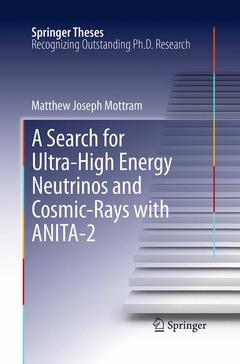Description
A Search for Ultra-High Energy Neutrinos and Cosmic-Rays with ANITA-2, 2012
Springer Theses Series
Language: English
Subjects for A Search for Ultra-High Energy Neutrinos and Cosmic-Rays...:
Publication date: 08-2016
Support: Print on demand
Publication date: 07-2012
143 p. · 15.5x23.5 cm · Hardback
Description
/li>Contents
/li>Biography
/li>Comment
/li>
The winner of UCL's annual HEP thesis prize, this work describes an analysis of the data from the second flight of the Antarctica Impulsive Transient Antenna (ANITA). ANITA is a balloon-borne experiment that searches for radio signals originating from ultra-high energy neutrinos and cosmic rays interacting with the Antarctic ice or air. The search for ultrahigh energy neutrinos of astrophysical origin is one of the outstanding experimental challenges of the 21st century. The ANITA experiment was designed to be the most sensitive instrument to ultra-high energy neutrinos that originate from the interactions of cosmic rays with the cosmic microwave background. The methodology and results of the neutrino and cosmic ray searches are presented in the thesis.
Matthew Mottram received his first degree, MPhys Physics with Astrophysics, from the University of Leeds in 2003. He received his PhD for University College London for his work on the ANITA experiment. Matthew is currently working as a Post-doctoral research associate at the University of Sussex, working on the SNO+ experiment.




